Warhammer The Old World – Who are the Bretonnians?
While the setting of Warhammer The Old World plays 200 years before the time Warhammer Fantasy was set in, the more important question is - who are the Bretonnians that didn't (quite) make it into new Age of Sigmar?
The introduction of the Old World itself, with a more elaborate lore, came with the release of the 3rd edition of Warhammer Fantasy and the supplement Warhammer Armies. Inside these books, the Bretonnian lore is brief and compact.
The Kingdom of Bretonnia is described in a similar way, the corrupt France as seen in the tales of d'Artagnan and the three Musketeers. A kingdom of proud cities and prosperous ports, who have fallen into ruin, due to widespread corruption, inefficiency and decay. Interestingly enough, that is the story of the Flesh-Eater Courts, who are based upon the pre-End-Times Bretonnians and degenerated into a realm of Undead cannibals. The threat of the undead is a theme, that was present during the 5th edition onward in the lore of Bretonnia, for example in the Dukedom of Mousillon or with the Red Duke.
And the range for those miniatures were sculpted in the late 1980s by the Perry Twins for Citadel Miniatures. In White Dwarf 129, of September 1990, the range got an 'Eavy Metal showcase. It was kept in the design of Burgundian forces, like a lot of the human races of Warhammer were in the old days, before they became more distinguished (with the Empire moving towards Landsknecht and Holy Roman Empire, Estalia to Conquistador Spain and Tilea to the Italian Wars of 13th and 14th century).
The Bretonnian range, as shown in the Citadel Catalogue of 1991, stayed with Citadel and was later handed over towards Wargames Foundry, who offer a part of the sculpts still today as their Early Medieval / Barons Wars / The 13th Century range. In the second picture we did some comparison. While the miniatures themself are the same, the old "original" Citadel had slotta bases and the new Foundry ones have oval bases on their feet. This is one way to identify them in the Oldhammer community, as some people are rather strict to have "pure" nostalgia among their lines. Among that range, only the horses were plastic, the rest was metal.
The Bretonnians weren't that present in the 4th edition, but returned and were strongly reworked, as they were part of the release 1996's 5th Edition of Warhammer Fantasy. A proud, noble and colourful kingdom returned, with a vast army of Knights, wearing all kinds of coat of arms, men-at-arms and a lot of characters. Once again, sculpted by the Perry twins.
And the lore got broader, the different dukedoms got depths, you had characters inspired by history and pop culture, with the 13th warrior homage of Suliman Le Saracen, the Robin-Hood-esque Bowmen of Bergerac, Repanse de Lyonesse (Jeanne D'Arc and the first miniature Michael Perry sculpted with his left hand) and others, all under the command of the Bretonnian King, Louen Leoncoeur, a clear nod to Richard I, the Lionheart.
This new range made use of the further updated plastic horses, and a plastic knight sprue for the core of the Knights of the Realm, all the other models like Knights Errant, Quest Knights etc. were metal miniatures upon plastic horses. As for the infantry, there were two poses of archers made from plastic, everything else was casted in metal.
In the middle of the 6th edition of Warhammer Fantasy, a variant that got more serious and a bit darker, the Bretonnians got a huge update, with reworked miniatures, lots more plastic and something that can only be described as scale creep. huge war horses, tall peasants were announced in Winter 2003 and released in January and February of 2004. And if you look at those prices, that were quite reasonable.
And a majority of the plastic has returned with the release of the Warhammer The Old World - Kingdom of Bretonnia boxed set. The Men-at-Arms, the Peasant Bowmen and the Knights, on horse and pegasus. The look is overall the same, but more uniform, they went with more of a united dukedom in 2300 IC instead of the mixed army look from 2500 IC. I would have liked to go further into detail, but as I don't have access to the Journals, the new information is rather basic.
The miniatures got bigger bases for the new release, but beyond that, they are untouched and the same as 20 years ago. And on some parts, this clearly shows, for example with the mould lines.
Most often the kits were designed in a way, that you had a core sprue for the warriors, and an additional sprue with the command pieces, for banners, champions and musicians. In some cases, these options were integrated into main sprue, giving you quite the surplus when collecting armies.
These models come from a time, where you had fixed bodies and a variety of arms and heads, that were interchangeable with them, so you could mix them at least within the box, most often across the range. Making conversions quite easy. This led to less dynamic poses in comparison with newer releases, but with rank & file you weren't able to make greater use of that any way.
The new base size gives you more flexibility while posing your models on the bases. That's a plus, as the Bretonnians moved up from 20x20mm to 25x25mm. Still, if you are not familiar with rank-and-file systems, make sure the models fit, when they stand shoulder to shoulder in regiments, both side by side and in ranks. I suggest you leave the shields off until you paint them.
Mould slip was an issue on the hands, that I didn't have that strong memory off. And as mentioned above, mould lines, a lot of them and quite present.
The cavalry benefits from the larger bases as well, as you can see the bulky warhorses were already cramped on the old 50x25mm cavalry bases, this eases up on the new 60x30mm bases.
And with the Bretonnian range being discontinued for almost 10 years, but Warhammer 9th Age and other projects keeping the banner up of the old fantasy, 3rd party suppliers for models came along during that decade. Some used historical miniatures, like from Fireforge Games, went on eBay with incredibly mark ups or in the last few years towards 3d printing. So, for the comparison of the current miniatures, I used the classic range of the 5th edition as well as 3d printed miniatures of Highland Miniatures, as they were closest to the aesthetics of the most current Bretonnians.
Regarding the infantry, that's printed at 100%, and you would need to scale that down the infantry by about 10-15%, if you intend to bring it on eye level with the old models. 5th vs 6th is on eye-level, the peasants just look much stronger / more heroic scale.
The difference between 5th and 6th is most noticeable with the horses. The Bretonnian Warhorse was made quite a bit bigger, along with more bulky knights. Highland seems to be still a bit taller, but well within range. The horses are spot on, very close in design, but different.
The latest additions to the range, like the Forge World Models are a bit bigger than the classic range, probably around the Highland Miniatures knights.
Depending on whether you like the rules or not, you have multiple options. go for the classic-classics at Foundry, go for the classic range 2nd hand, get your hands on the re-released old range - if it is at stock - from Games Workshop and FLGS, or go third party, 9th Age has a broad gallery of ranges, that were used as Bretonnians during their non-availability.
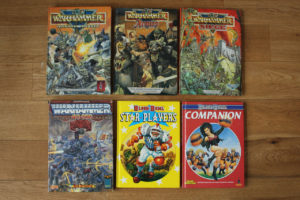
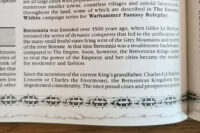
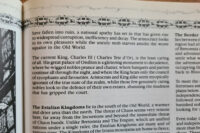
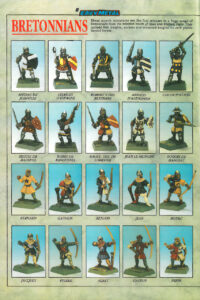
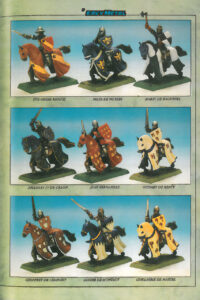
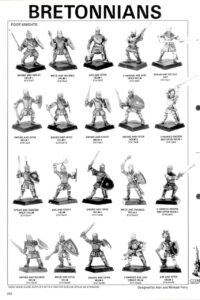
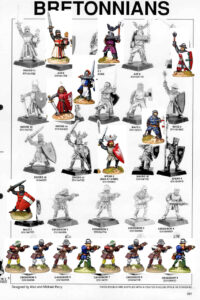
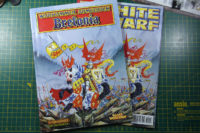

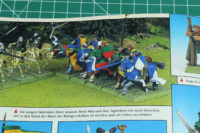

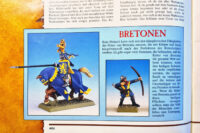
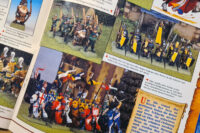
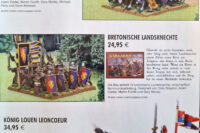
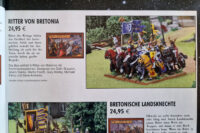
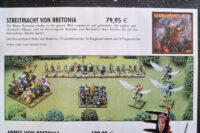
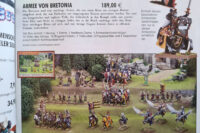
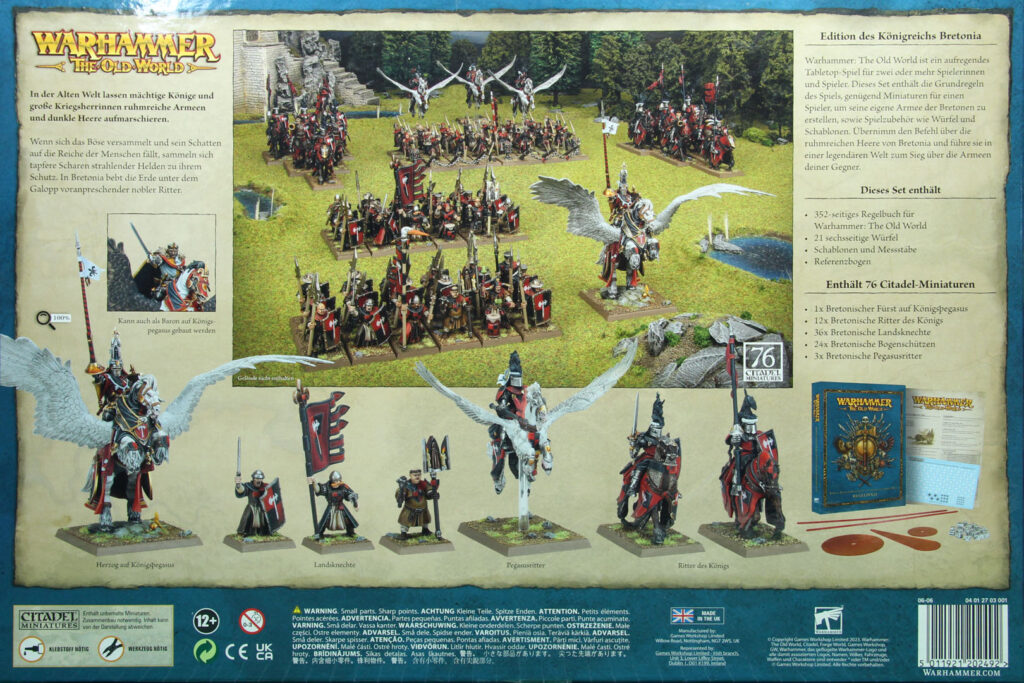
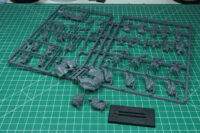
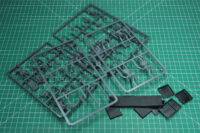
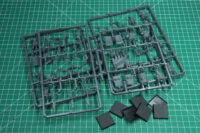
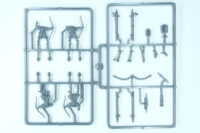
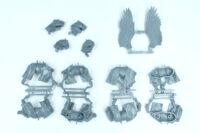
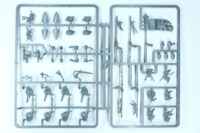
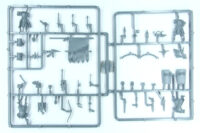
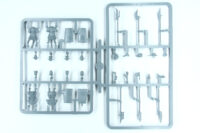
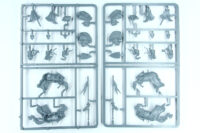
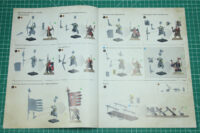
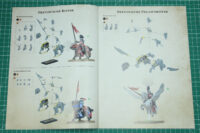
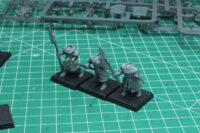
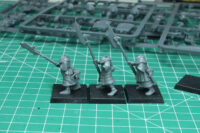
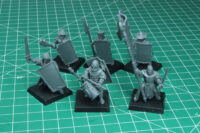
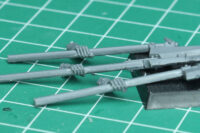
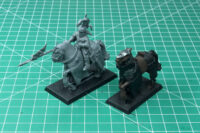
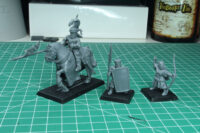
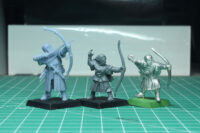
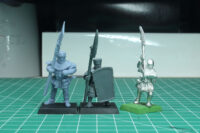
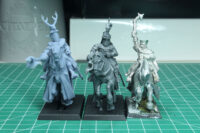
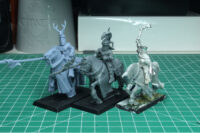
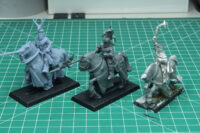
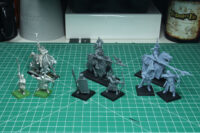












Leave a Reply